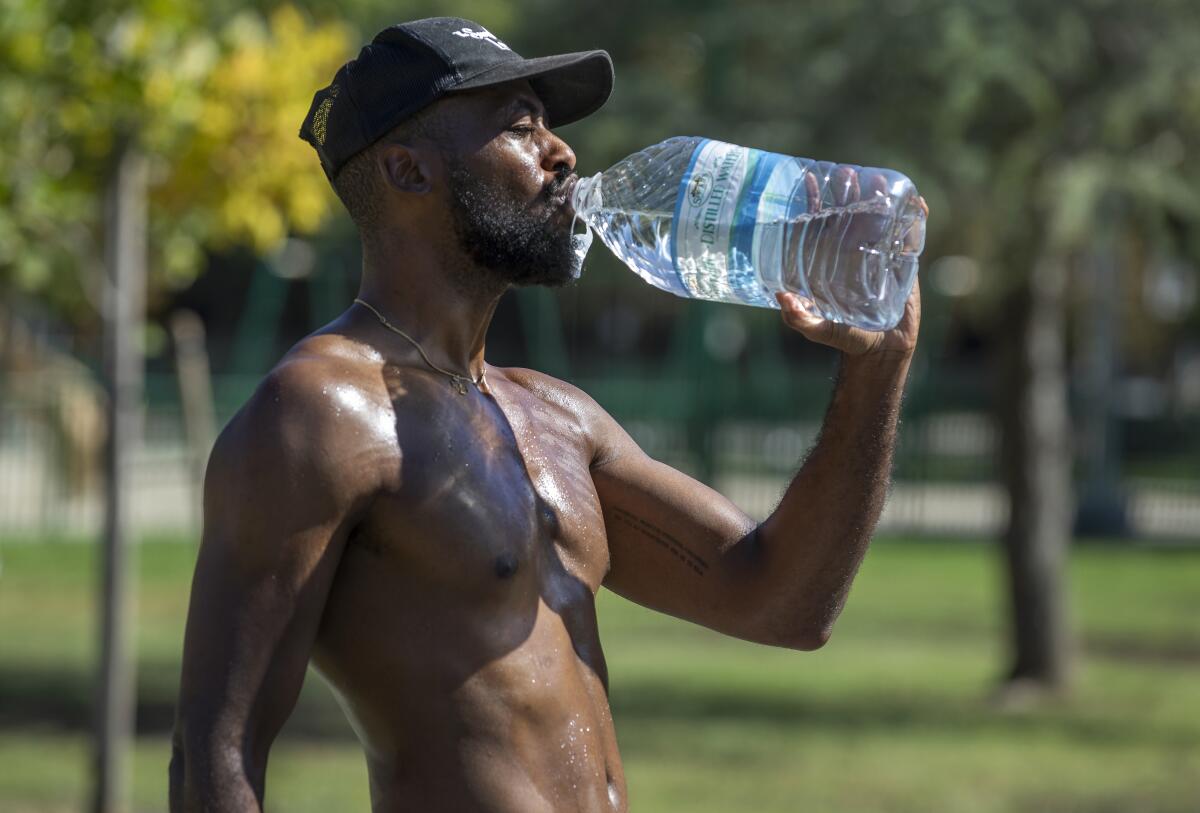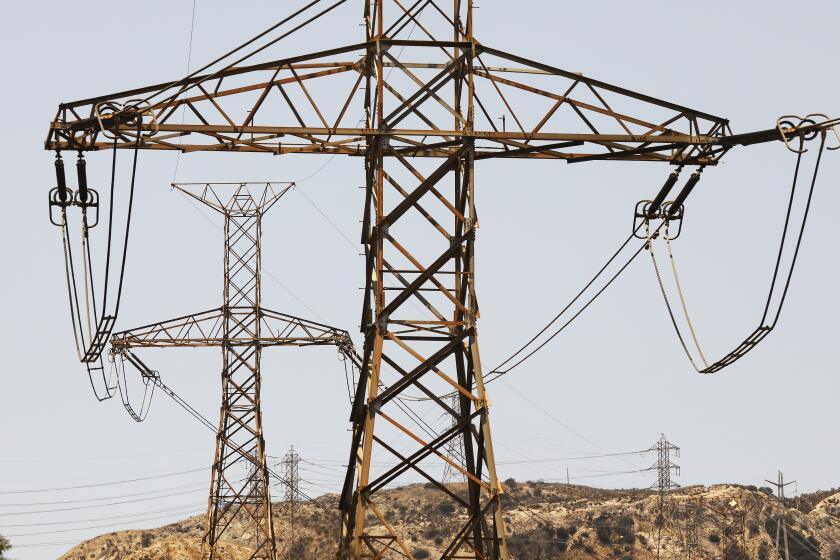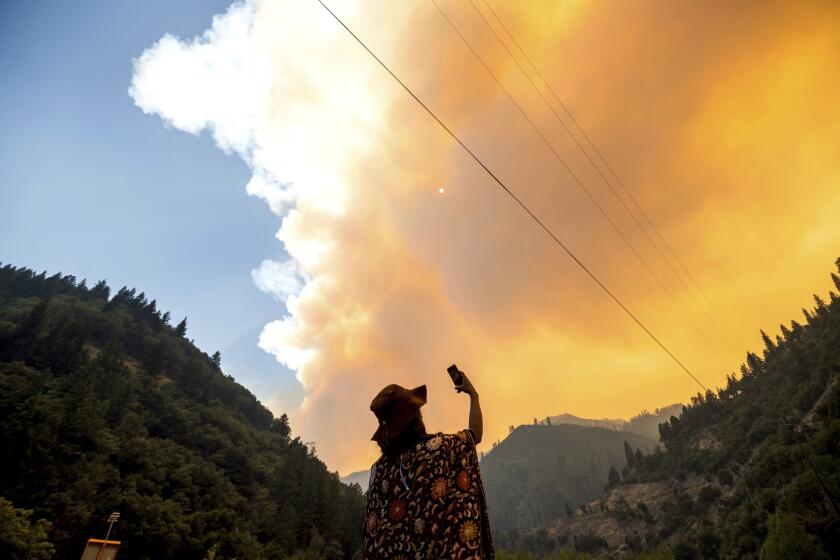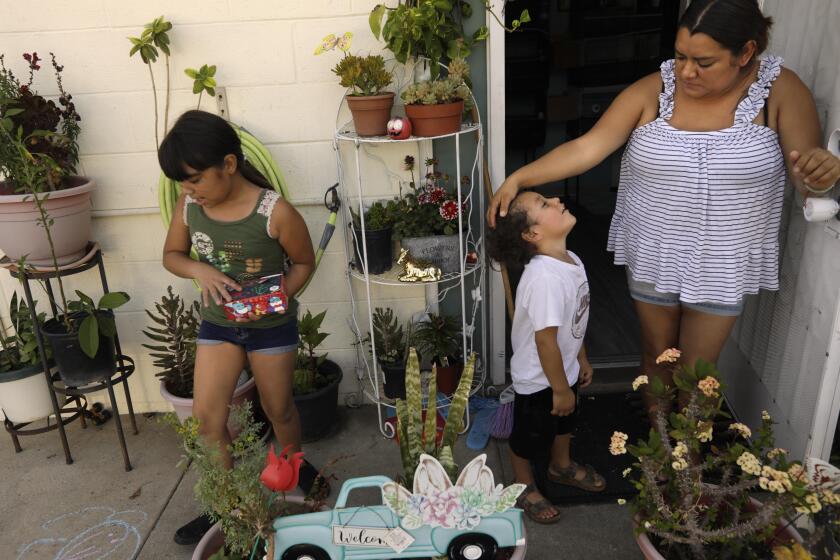How to keep cool when there’s no power

- Share via
California’s grid is being pushed to its limit.
On Tuesday, as triple-digit heat broke records around the state, the grid operator warned that power usage was the highest it had ever been. In addition to a Flex Alert, the state sent an emergency text in the late afternoon asking people in certain areas to conserve power as much as possible. If usage didn’t come down enough, there could be rolling blackouts.
Californians answered the call: Power usage came down enough to avert widespread outages. But there’s always a risk of grid failures when there’s so much demand, and the heat hasn’t let up yet. There are lots of tips to stay cool, but a lot of them involve using some electricity.
Here’s what you can do to stay cool without power before and during an outage.
Here’s what to do before, during and after a power outage as a heat wave continues to scorch California.
How to prepare before a blackout
If you have advance notice of a rolling blackout, try to cool your home as much as possible beforehand and do whatever you can to keep it that way, said Joseph Riser, a public information officer for the Los Angeles Emergency Management Department. During a Flex Alert, you want to keep your AC at 78 or higher, or turn it off entirely. But before the alert goes into effect, it’s OK to crank it so that the system will have to work less when you should be conserving power. Close blinds, curtains and doors to contain the cooler air.
A battery-operated or rechargeable fan will come in handy. Even a little handheld one will help you feel more comfortable. Consider adding one to your emergency kit. If you get one that can be recharged via USB, you could use power from a charged laptop or power bank to keep the fan running during a protracted outage.
Stay hydrated. Tap water will still be accessible — power outages usually don’t affect whether the plumbing works — and is perfectly safe to drink in L.A., Riser said. If you prefer water from your fridge filter, consider filling up a few extra bottles ahead of time.
Sign up for alerts from your electricity provider and bookmark the page with the outage map for the latest information. In a lot of Southern California, that’s going to be Southern California Edison, which has an outage map here and lets you sign up for alerts by email, text and phone here. In the city of Los Angeles, you can check the L.A. Department of Water and Power outage map here and click here to sign up for alerts. Here’s the outage map for San Diego Gas & Electric and how to download the app with alerts. And here’s where to find the outage map for Pacific Gas & Electric, which serves much of the rest of California, and where to sign up for those alerts.
When the state calls for a Flex Alert, you should try to conserve as much power as possible. Here are some ideas for saving energy.
How to stay cool when the power’s out
Hydrate, hydrate, hydrate. With one big caveat: Freezing-cold water will actually make your body work harder, causing you to heat up, Riser said. Stick to cool or cold drinks, not ones that are a degree or two off glacial. And don’t forget to offer plenty to your pets.
Cold compresses on your head and the back of your neck, and cold showers or baths are other good ways to regulate your body temperature, with the same clause about erring on the side of “cool” over “frigid.” Sticking your feet in a bucket of cold water will help cool you down if you don’t want to spend all day in the tub. If you have a spray bottle, you can fill it with cool water and mist yourself.
“Knowing your house” can help you avoid overheating, Riser said. Depending on how long the outage lasts and which way your windows face, you might want to move to rooms with cooler areas as time goes on. Not many people in California have basements, but if you do, it’s probably not as warm down there. If your house has multiple stories, the ground floor will be a better bet than the upper floors. If you know there’s a specific time of day that a breeze kicks up, open your window at that point to let it cool your house. If you have a shady area or even a pool in your backyard, it might be cooler out there than indoors.
Keep an eye on the temperature outside and inside your house as it gets later in the day. If the temperature drops to where it’s lower outside, do the opposite of what you did earlier: Open all the windows and doors and let the cooler air flow in. Or take that opportunity to go to a local park or other shaded outdoor location.
Riser also recommends checking whether local family and friends still have power. You might opt to decamp to their house for a few hours or overnight. You could also visit a cooling center, your local library, or a restaurant or movie theater, if you can afford it. Again, signing up for alerts from your power provider will help you keep track of how long you can expect the lights to be out, and when you might be able to go back home.
Some don’ts for when the power is out:
- Stand in front of an open fridge: While understandably tempting, this won’t do much to regulate your body temperature, and you risk letting all your food spoil.
- Run a gas-powered generator indoors: Never, ever.
- Cook with gas appliances: Even if you have a gas stove or oven that are still functioning, try to avoid cooking inside when you’re trying to keep temperatures as low as possible.
- Burn candles: They’re a fire risk. If you need light, opt for battery-powered sources.
What are heat-related illnesses and how are they treated? Are they preventable or inevitable? We talked to health experts for the answers.
Signs of heat-related illness
When you can’t turn on your AC and it’s blazing hot outside, you are at risk of heat-related illnesses. Here are the signs, what to do when they happen, and when it’s time to go to the emergency room or call 911. Never hesitate to call emergency services when you feel seriously ill, Riser said, even when it’s during another emergency like a power outage.
- Heat cramps: Heavy sweating during intense exercise. Muscle pain or spasms.
What to do: Cease exercising. Move to a cool place. Drink water or a beverage with electrolytes.
When to seek help: If cramps last longer than an hour, if you’re on a low-sodium diet, or if you have heart problems. - Heat exhaustion: Heavy sweating. Cold, pale and clammy skin. A fast, weak pulse. Nausea or vomiting. Muscle cramps. Tiredness or weakness. Dizziness. Headaches. Fainting.
What to do: Move to a cool place. Loosen your clothes. Apply cold compresses or take a cold bath. Sip water.
When to seek help: If you’re throwing up, your symptoms get worse, or your symptoms last longer than an hour. - Heat stroke: Body temperature of 103 or higher. Hot, red, dry or damp skin. A fast, strong pulse. Headache. Dizziness. Nausea. Confusion. Fainting.
When to call 911: Immediately. Heat stroke is a medical emergency. Do not give a person suffering from heat stroke anything to drink. Move them to a cooler place and use cold compresses or a cold bath to lower their temperature.
About The Times Utility Journalism Team
This article is from The Times’ Utility Journalism Team. Our mission is to be essential to the lives of Southern Californians by publishing information that solves problems, answers questions and helps with decision making. We serve audiences in and around Los Angeles — including current Times subscribers and diverse communities that haven’t historically had their needs met by our coverage.
How can we be useful to you and your community? Email utility (at) latimes.com or one of our journalists: Jon Healey, Ada Tseng, Jessica Roy and Karen Garcia.
More to Read
Sign up for Essential California
The most important California stories and recommendations in your inbox every morning.
You may occasionally receive promotional content from the Los Angeles Times.














